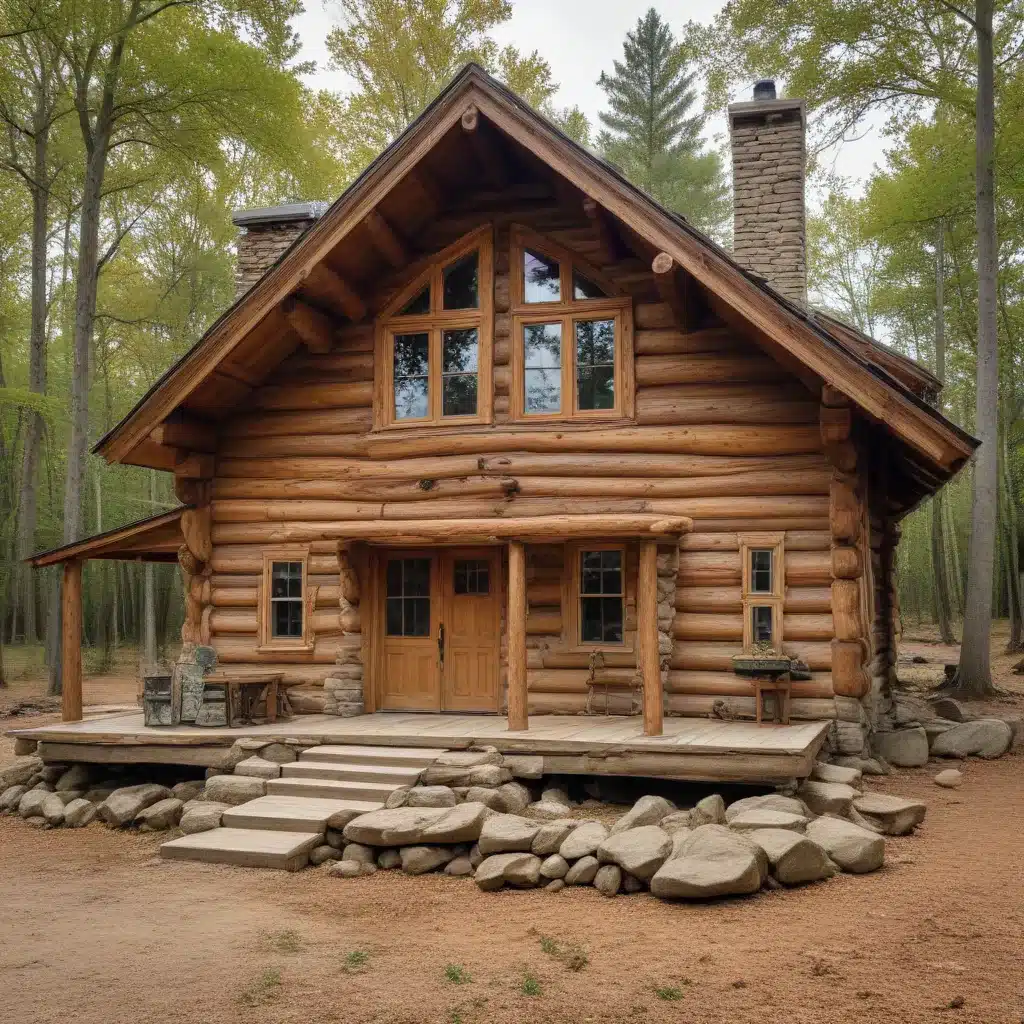
Constructing Durable Log Cabins: Techniques, Materials, and Maintenance
Building a log cabin is a time-honored tradition that has captivated homeowners for generations. These charming structures, with their rustic appeal and connection to nature, offer a unique living experience. However, ensuring the longevity and structural integrity of log cabins requires careful consideration of various factors, from construction techniques to material selection and ongoing maintenance.
Construction Quality and Log Selection
The foundation of a durable log cabin lies in the quality of its construction. Utilizing high-quality logs, preferably from slow-growth trees, is essential. These logs possess tighter grain patterns and are less prone to warping or cracking. Proper seasoning of the logs is crucial to reduce moisture content and minimize future settling. Additionally, employing skilled craftsmanship is paramount to ensure precise joinery and tight seals between the logs, creating a sturdy structure that can withstand the test of time.
Moisture Management and Pest Control
Moisture is the primary adversary of a log cabin, as it can lead to rot, decay, and a host of other issues. Constructing the cabin on a well-drained site with ample sunlight exposure can help mitigate groundwater seepage and promote natural drying. Incorporating effective drainage systems, such as gutters and downspouts, helps divert water away from the cabin’s perimeter. Applying high-quality sealants and chinking between the logs also creates an additional barrier against moisture intrusion.
Pests, such as wood-boring insects and termites, pose a significant threat to the structural integrity of log cabins. Proactive measures, like pre-treating the logs with insecticides or borate-based solutions during construction, can help repel these pests. Regular inspections and prompt addressing of any signs of pest activity are crucial to prevent further damage.
Rot and Decay Prevention
Combating rot and decay is essential to maintain the structural integrity of a log cabin. Proper ventilation, which facilitates air circulation and drying, is vital. Applying wood preservatives or borate-based treatments can protect the logs against fungal decay and rot. Regularly inspecting the logs for signs of deterioration and promptly replacing any damaged or rotted sections is crucial to address underlying issues.
Maintenance and Preservation Techniques
Regular maintenance is key to the longevity of a log cabin. Routine cleaning, using soft brushes or low-pressure washers, helps remove dirt, debris, and organic matter that can trap moisture against the wood. Applying protective finishes, such as stains or paints, shields the logs from UV rays and moisture, preventing fading, cracking, and enhancing their lifespan.
Conducting seasonal inspections, both inside and outside the cabin, allows for the identification and prompt address of any potential issues, such as leaks, cracks, or signs of wear and tear. Addressing these problems in a timely manner is essential to preserving the structural integrity of the log cabin.
Eco-Friendly Materials and Energy Efficiency
In addition to construction quality and maintenance, the use of eco-friendly materials and the incorporation of energy-efficient features can significantly enhance the longevity and sustainability of log cabins.
Sustainable Logging Practices
The selection of logs is not only crucial for structural integrity but also has environmental implications. Sourcing logs from well-managed, sustainable forests ensures that the timber used in the construction of log cabins is renewable and minimizes the impact on natural resources.
Insulation and Thermal Performance
Proper insulation is essential for log cabins to maintain comfortable temperatures and optimize energy efficiency. Natural insulation materials, such as sheep’s wool, cellulose, or cotton batts, can be used to complement the inherent insulating properties of the logs. Closed-cell spray foam insulation is another effective option, as it provides excellent insulation and helps seal any gaps or cracks in the logs.
Strategies like strategic window placement, double-glazed windows, and insulation in the roof and floor can further enhance the energy efficiency of log cabins. These measures help regulate interior temperatures, reduce heating and cooling costs, and contribute to the overall comfort and sustainability of the living environment.
Alternative Energy Solutions
Log cabins present opportunities to incorporate alternative energy solutions, such as solar panels or geothermal systems, to reduce their reliance on traditional energy sources. These eco-friendly technologies can help log cabin owners minimize their carbon footprint and enjoy long-term cost savings.
Cost Considerations and Professional Expertise
Constructing a log cabin requires a significant investment, but the long-term benefits and potential appreciation in value make it a worthwhile endeavor. Understanding the cost implications and the need for specialized expertise can help homeowners make informed decisions.
Construction Costs
The cost of building a log cabin can vary depending on factors such as the size, location, choice of materials, and the complexity of the design. On average, the construction of a medium-sized log cabin in the United States can range from $200 to $400 per square foot, not including the cost of the land. Factors like the quality of the logs, the inclusion of advanced insulation, and the need for specialized labor can impact the overall budget.
Professional Guidance and Expertise
Engaging experienced professionals, such as log cabin builders, architects, and engineers, is crucial to ensure the structural integrity, energy efficiency, and compliance with local building codes. While this may increase the initial investment, their expertise can help homeowners avoid costly mistakes and ensure the long-term durability of the log cabin.
Preserving the Charm and Legacy of Log Cabins
Log cabins hold a special place in the hearts of many, representing the pioneering spirit and connection to nature that have defined the American experience. By understanding the techniques, materials, and maintenance required to preserve their structural integrity, homeowners can ensure that these timeless structures continue to stand as enduring symbols of the past and provide comfortable, eco-friendly living spaces for generations to come.
For those interested in constructing or renovating a log cabin, Jørgensen Log Homes offers a wide range of expertise and resources to guide you through the process, from design and construction to energy-efficient solutions and ongoing maintenance. Embrace the charm and sustainability of log cabin living and explore the possibilities with Jørgensen Log Homes.


